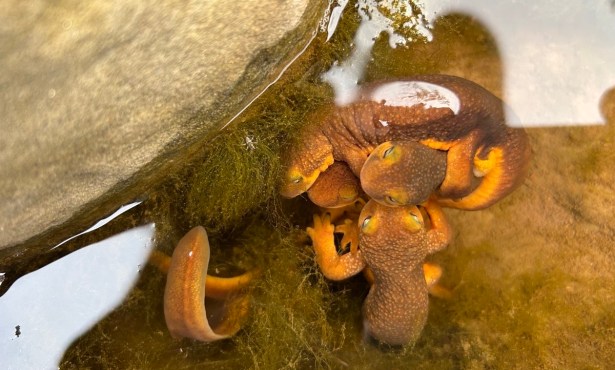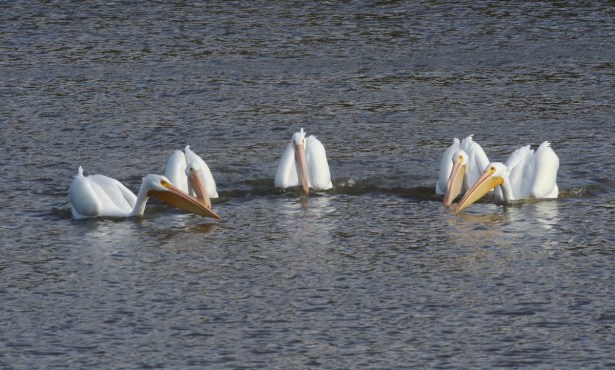One Santa Barbara Woman’s Ode to Cows
Sally Isaacson’s Life Alongside Bovines, from Ireland to California

Cows have been part of my life for a very long time.
When I was young, growing up in Ireland, our family lived on a farm in the beautiful hills of Wicklow. The farms in Ireland are generally small, and the cattle are tame; farmers round them up with a big stick. We had 30 acres of good grassland, and the property was able to support about 20 cows.

We had a mixture of many breeds. As Ireland is traditionally a big dairy country, producing lots of milk, butter, and cheese, most cattle were at least partly Friesian (called Holstein in the United States). The government had a program whereby it provided an artificial insemination service to small farms. I remember how excited we’d get when a cow was in heat and the “man with the red van” showed up.
Dad pored through a book that had glossy photos of all of the prize-winning government bulls. There were golden-colored Charolais’ roan, red, or white shorthorns; Herefords; black Aberdeen Angus; and many others. It seemed to me there wasn’t much rhyme or reason to which bull was chosen, and so, at that time in Ireland, cattle were a rainbow of colors.
I fondly remember Rosie, a very tame red shorthorn. When I was young, I could walk right up to her when she was lying down. I would quietly climb on top of her, and then she would rise up and roam about with me on her back.
Get the top stories in your inbox by signing up for our daily newsletter, Indy Today.
When I was a teenager, Dad gave me a roan cow named Lulu. She was pretty and pink, and I loved her. In college, I fell in love with a boy from California, and the next year I was determined to visit him. I needed money, so I sold Lulu back to my father and bought a ticket to the U.S.
I eventually married the California boy, only to find out that he too, had a fascination for cattle as well as for horses. My other passion has always been horses, having had a pony since I was very young, and later breeding Connemara ponies with my mother.
Bob and I ran his family’s ranch in Santa Barbara County for over 30 years. Our 800 acres were able to support about 80 cows. We both had full-time jobs that involved dealing with lots of people, so the ranch turned out to be our peaceful place.
After losing Bob, I held onto the cattle for about six years. All of those were drought years, and I fed many tons of hay and made no profit at all. Eventually, I sold the cattle to my daughter and her husband, except for a few that I keep at a little place that I bought.
I told my daughter that they were crazy and would never make any money. My husband had always said that the term “cattle business” was an oxymoron. Some of my ancestors lost money on horses, but it’s easy to lose money on cattle too. And then, wouldn’t you know, it rained!
I have five cows now. I even have a Jersey cow. I had always wanted a Jersey as these small, pretty, exceptionally maternal cows with big brown eyes are common in Ireland. Jerseys are dairy cows with very rich milk, and, in Ireland, the dairy herds always had a few of them among the big black-and-white Friesians to raise the butter fat content of the milk to government standards. These days there are fewer Jerseys due to low-fat milk being more fashionable.
I have a fantasy of milking the Jersey and making cheese with the beautiful wooden cheese press that belonged to my mother. My daughter and I even took a cheese-making class. This may never happen though, as the Jersey shakes her horns at me, and she may be too difficult to handle for milking. The Jersey has been very hard to breed. Our local vet has been trying to breed her with sexed Jersey semen that gives a 90 percent chance of a heifer calf, but this is tricky.
We eventually got her bred to an Angus, and she had a black calf. The calf grew up, and I sold him. Some months later, I noticed that the silly Jersey had taken on an older cow as a child, and she was still producing milk. I bought an orphan from a neighbor, and the cow is now raising her. I named her Josephine in honor of the recent election results.
My daughter and son-in-law now have the cow bug. The grandkids love bovines too. A couple of years ago, I gave the kids a tame cow with her heifer calf so that they would have their own “herd.” Their black cow “Apple” is obsessed with apples, and her daughter, a red heifer named “Candy Apple,” will also come running. My granddaughter tamed her so much that she is a real pet.
Western cowboys and cowgirls are supposed to be tough, and I am, up to a point. If we ever have a steer butchered, for example, I make a point of being there until the end. I figure that if I can’t do that, I should not eat meat. We have a family rule not to name the bull calves, as they will always be sold.
I know a cowboy who manages one of the biggest ranches in our area. One day I drove through the entrance of that ranch and was most amused to see him hugging and petting a cow. It turned out that this was a pet that his kids had raised on a bottle. So much for toughness!
I have read that the Irish love land and they love cows. I am so fortunate to have both.
Every day, the staff of the Santa Barbara Independent works hard to sort out truth from rumor and keep you informed of what’s happening across the entire Santa Barbara community. Now there’s a way to directly enable these efforts. Support the Independent by making a direct contribution or with a subscription to Indy+.




You must be logged in to post a comment.